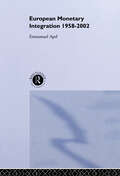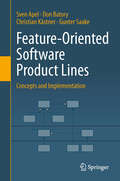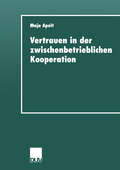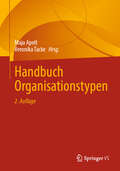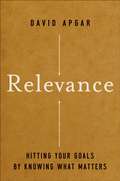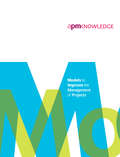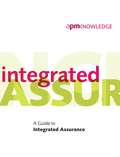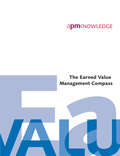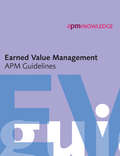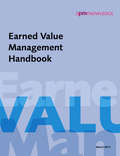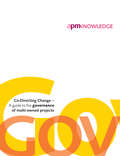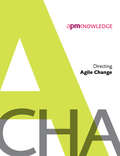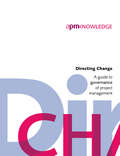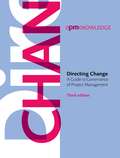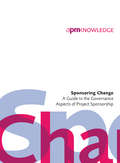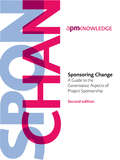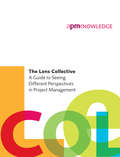- Table View
- List View
European Monetary Integration: 1958 - 2002
by Emmanuel ApelThis book is an accessible introduction to European monetary integration which provides a historical background to current debates, as well as an analysis of future developments. Further features of this book include: * a chronology of economic and monetary unification from 1958-1999 * clear non-technical presentation of the economic issues regarding the costs and benefits of creating a monetary union * detailed presentation of the economic and legal framework for the changeover to a single European economy * evaluation of the Maastricht Treaty's plan for monetary union * an overview of the debate between the federalist approach and the inter-governmental co-operation approach towards economic and political integration of Europe * a set of questions and exercises illuminating the more technical parts of the book European Monetary Integration 1958-2002 is an excellent resource for all those who want to discover the facts about European monetary integration which lie behind the heated political rhetoric.
Feature-Oriented Software Product Lines: Concepts and Implementation
by Sven Apel Don Batory Christian Kästner Gunter SaakeWhile standardization has empowered the software industry to substantially scale software development and to provide affordable software to a broad market, it often does not address smaller market segments, nor the needs and wishes of individual customers. Software product lines reconcile mass production and standardization with mass customization in software engineering. Ideally, based on a set of reusable parts, a software manufacturer can generate a software product based on the requirements of its customer. The concept of features is central to achieving this level of automation, because features bridge the gap between the requirements the customer has and the functionality a product provides. Thus features are a central concept in all phases of product-line development. The authors take a developer’s viewpoint, focus on the development, maintenance, and implementation of product-line variability, and especially concentrate on automated product derivation based on a user’s feature selection. The book consists of three parts. Part I provides a general introduction to feature-oriented software product lines, describing the product-line approach and introducing the product-line development process with its two elements of domain and application engineering. The pivotal part II covers a wide variety of implementation techniques including design patterns, frameworks, components, feature-oriented programming, and aspect-oriented programming, as well as tool-based approaches including preprocessors, build systems, version-control systems, and virtual separation of concerns. Finally, part III is devoted to advanced topics related to feature-oriented product lines like refactoring, feature interaction, and analysis tools specific to product lines. In addition, an appendix lists various helpful tools for software product-line development, along with a description of how they relate to the topics covered in this book. To tie the book together, the authors use two running examples that are well documented in the product-line literature: data management for embedded systems, and variations of graph data structures. They start every chapter by explicitly stating the respective learning goals and finish it with a set of exercises; additional teaching material is also available online. All these features make the book ideally suited for teaching – both for academic classes and for professionals interested in self-study.
Vertrauen in der zwischenbetrieblichen Kooperation
by Maja ApeltDie Autorin zeigt, dass sich mit der Verschlankung und Virtualisierung von Zulieferbeziehungen ein Wandel des Vertrauens vollzieht, und weist auf verschiedene Typen von Vertrauensbeziehungen hin, an denen das ambivalente Verhältnis von Vertrauen und Macht deutlich wird.
Handbuch Organisationstypen
by Maja Apelt Veronika TackeDas Handbuch legt in seiner zweiten Auflage überarbeitete und aktualisierte Darstellungen einer Vielzahl von Organisationstypen aus allen Bereichen der Gesellschaft vor und ergänzt die bisherigen Beschreibungen noch um zahlreiche weitere.
Relevance: Hitting Your Goals by Knowing What Matters
by David ApgarIn this groundbreaking book, business guru David Apgar helps leaders pinpoint which information matters most for successful goal setting, strategy, and bottom-line performance. Based on simple and easy-to-implement practices, Relevance outlines a new discipline focused on the relevance of performance measures for assessing key strategy issues and accelerating learning. David Apgar’s practices are grounded in solid business research and clearly illustrated with real-life examples from top-performing companies such as Toyota, Alcoa, Nestlé, Capital One, Cisco, Microsoft, and GE.
Agile project management: a panacea or placebo for project delivery?
by ApmOn 7 July 2017, the Association for Project Management (APM), the Chartered body for the project profession, held an Agile Summit with its corporate partners, government bodies and key stakeholders to start the process of shaping the APM’s position on agile project management in the wider context of professional project delivery. Stimulated by input from practitioners and interested parties from the wide range of sectors who attended the event, this report aims to lay out key themes that drew a consensus. The event sought to focus on agile project management applied other than to ‘pure’ software development, and this discussion paper deliberately avoids the use of agile taxonomy. As the event was carried out under terms of full confidentiality, the specific detail of contributions is not being disclosed. All the examples shared at the event were of cases where agile project teams were assembled from inside the organisation concerned with internal clients. We encourage all those interested in how agile might impact their work and business to use this document to help inform debate within their organisations and networks. If you would like to contribute further to evolving this area of interest, please contact knowledge@apm.org.uk.
APM Project Fundamentals Qualification (PFQ) Exam Syllabus (PDF)
by ApmAPM Project Fundamentals Qualification (PFQ) Exam Syllabus PFQ is an introductory qualification that offers a fundamental awareness of project management terminology, offering a broad understanding of the principles of the profession.
APM Project Fundamentals Qualification (PFQ) Sample Paper (PDF)
by ApmAPM Project Fundamentals Qualification (PFQ) Sample Paper for the PFQ exam
APM Project Management Qualification (PMQ) Exam Syllabus (PDF)
by ApmAPM Project Management Qualification (PMQ) Exam Syllabus: PMQ is a knowledge-based qualification that allows candidates to demonstrate knowledge of all elements of project management.
APM Project Management Qualification (PMQ) Sample Paper (PDF)
by ApmAPM Project Management Qualification (PMQ) Sample Paper for the PMQ exam.
Building Sponsors (PDF)
by ApmA guide to project sponsorship Background Project sponsorship offers organisations huge opportunities when implemented successfully. While significant work has been undertaken to improve project performance via project delivery teams, little has focused on critical issues of sponsorship and leadership. This may be attributed to the sponsor’s role being hard to define and lacking traction in the boardroom. In 2015, APM ran an extensive research project investigating the Conditions for Project Success. The 12 conditions provide a conceptual framework against which real project delivery could be assessed. The research concluded that while the conditions were widely accepted as being integral to successful project delivery, they were infrequently applied and almost never in full. In five of those conditions, the project sponsor has the lead role. Sponsors’ Summit APM has committed itself to addressing this critical enabler of project success. In January 2018, APM held a Sponsors’ Summit with it's Corporate Partners, government bodies and key stakeholders to start the process of building a shared understanding of how to improve the sponsorship of projects, programmes and portfolios. The summit focused on real-world experiences from the wide range of sectors represented, and was undertaken under terms of full confidentiality. Building sponsors – future project leadership This report lays out key themes that drew a broad consensus. We encourage all those interested in how sponsorship might impact their work and business to use this document to help inform debate within their organisations and networks.
Chartered Project Professional (ChPP) Application Guidance (PDF)
by ApmChartered Project Professional (ChPP) Application Guidance
Models to Improve the Management of Projects
by ApmMany organisations look to standard models when trying to improve their project and programme management practice. This guide, written by some of the leading thinkers in the subject, provides independent and informed guidance on the main models currently in use and which are designed to improve the management of projects. Readers of this publication may also be interested in The Scheduling Maturity Model.
A Guide to Integrated Assurance
by APM Assurance Specific Interest GroupA Guide to Integrated Assurance enables organisations to improve the efficiency and effectiveness of their assurance activities. Written by APM’s Assurance Specific Interest Group, the guide identifies important roles and responsibilities as well as tools and templates to help overcome ‘silo-oriented approaches’ to assurance that do not naturally result in integration. It is aimed at project managers, sponsors (in particular, those responsible for designing and carrying out assurance activities) and stakeholders with an interest in the successful delivery of the projects, programmes or portfolios. Readers of this publication may also be interested in APM Introduction to Programme Management 2nd edition and Directing Change.
The Earned Value Management Compass
by APM Earned Value Management SIGEarned value principles and the benefits they can bring to project control may be applied in a variety of ways. In some cases the principles are being applied without knowing that they are part of earned value. The key is to understand how and where earned value principles are being applied and to encourage them. This guide gives a defined means of establishing and improving project control capability. The Earned Value Management Compass , written by the APM Earned Value Management Specific Interest Group, is intended to support projects or organisations by improving their project control and earned value management processes. Readers of this publication may also be interested in Earned Value Management: APM Guidelines, 2nd edition, Earned Value Management Handbook.
Earned Value Management Guidelines
by APM Earned Value Management Specific Interest GroupEarned value management is a project control process, based on a structured approach to planning, cost collection and performance measurement. Written by the APM Earned Value Management Specific Interest Group, this is a work of reference for project professionals. This second edition remains reciprocal with ANSI/EIA-748-B Earned Value Management Systems standard. Readers of this publication may also be interested in The Earned Value Handbook, The Earned Value Management Compass and Interfacing Risk and Earned Value Management
Earned Value Management Handbook
by APM Earned Value Management Specific Interest GroupEarned value management is a good practice approach used for the planning, management and control of projects and programmes. These can range from large programmes to relatively small, internal company projects. The Earned Value Handbook is aimed at the wide range of project professionals working on earned value based projects including project managers, control account managers, project planners and project analysts. It is also fully aligned to the Earned Value Management (EVM) certification at foundation and practitioner level.
Introduction to Managing Change (PDF)
by APM Enabling Change SIGAPM’s Introduction to Managing Change has been published and is available to order. The book discusses the importance of managing change effectively in order to successfully deliver and realise the benefits of projects, programmes and portfolios. Inside readers will find key principles and practices, as well as guidance on the appropriate application of different change management methodologies. Introduction to Managing Change is ideally suited to project professionals undertaking change programmes and projects, or those directing or sponsoring change. Writing in the foreword, Professor Tim Brady describes the guide as supplementing traditional project management tools and methods with “knowledge about how to manage the change which is an inevitable part of the process of today's complex projects”. Readers may also be interested in Directing Change, Sponsoring Change and Directing Agile Change.
Co-Directing Change
by APM Governance Specific Interest GroupMulti-owned projects are on the increase, as businesses and other organisations capitalise on their complementary resources while diluting risk exposure. Written by the APM Governance Specific Interest Group, this guide enables an organisation’s directors to question how well its shared projects are governed and to decide where and at what level action is needed. Readers of this publication may also be interested in Directing Change, Sponsoring Change and Directing Agile Change
Directing Agile Change
by APM Governance Specific Interest Group“Agile working is increasingly recognised by organisations as a competitive advantage, where a speedier but controlled response is needed to changing environmental conditions. How should organisations oversee the delivery of agile projects? This guide provides the answer.” Jennifer Stapleton, foreword author. Directing Agile Change is the latest offering from APM’s Governance Specific Interest Group (SIG). Written by SIG members Brian Wernham, Adrian Pyne, Roger Garrini and Martin Samphire, this latest guidance is aimed at those involved in the governance of all change initiatives, with an emphasis on those at senior level – board members, sponsors and stage gate reviewers etc. Divided into five main sections, the guide covers the main principles of agile governance, when to adopt an agile approach and, importantly, how to gain the most value from being agile. Also included are checklists to adopt and key questions to ask. Directing Agile Change is the first ‘how to’ agile guide published by APM. It seeks to recognise that agile is not limited to software development but can also be applied to many aspects of an organisation. Readers of this publication may also be interested in Directing Change, Co-Directing Change and Sponsoring Change. Book review: “WRITTEN AT A VERY HIGH LEVEL” Directing Agile Change is a ‘how-to’ guide targeted at professionals at senior management level who are new to agile ways of working and project delivery, but are accountable for their success. Divided into five main sections, the book introduces agile concepts, principles and myths in straightforward language and without complex jargon. It also provides easy-to-follow governance checklists applicable to relevant roles. The latest offering to be published by the APM Governance Specific Interest Group (SIG), Directing Agile Change was compiled by SIG members Brian Wernham, Adrian Pyne, Roger Garrini and Martin Samphire. It is written at a very high level and introduces concepts only very briefly to the audience. However, this approach is highly appropriate for people who engage at a higher level. This book will benefit those who operate at board or steering-committee level, rather than project managers, who should be working at a much more detailed level. Reviewed by Premanand Doraiswamy
Directing Change
by APM Governance Specific Interest GroupThis second edition of Directing Change has been updated to reflect the terminology and structure of more recently published APM guidance, such as Co-Directing Change, Sponsoring Change, feedback from users and changes to regulations such as the new UK Corporate Governance Code, which has replaced the previous Combined Code. The increased awareness of the importance of corporate risk management, sustainable development and ethical practice is recognised. Written by the APM Governance Specific Interest Group, this guide will help you apply standard governance requirements to your project portfolio. Readers of this publication may also be interested in Co-Directing Change, Sponsoring Change and Directing Agile Change.
Directing Change,: A Guide to Governance of Project Management (3rd edition)
by APM Governance Specific Interest GroupThe latest edition has been fully updated to include: New codes of governance and lessons of governance success and failures. Feedback from practitioners, including a new section on culture and ethics. Descriptions and checklists for key governance roles and activities. Written by experience change practitioners from APM’s Governance SIG, the guide is designed to help all those with governance roles, from boards of directors and sponsors to project managers and independent reviewers. First published in 2004, Directing Change quickly established a reputation as the go-to reference for the governance of complex change. The third edition continues that tradition, remaining concise, but ‘even more relevant and user-friendly’.
Sponsoring Change
by APM Governance Specific Interest GroupWith the role of project or programme sponsor being still widely misunderstood and poorly practised, this eagerly awaited publication aims to improve sponsorship performance. Sponsoring Change applies to all types of organisations and sectors. Its use will improve governance, bringing greater rewards to organisations undertaking significant projects as well as to their owners and to wider stakeholders. It explains: why sponsorship is needed; the critical attributes of sponsorship; what a sponsor does. The implementation of a thorough peer review process prior to publication ensured that the guide provides a widely valued contribution to good governance and sponsorship. Readers of this publication may also be interested in Directing Change, Co-directing Change and Directing Agile Change
Sponsoring Change,: A Guide to the Governance Aspects of Project Sponsorship (2nd edition)
by APM Governance Specific Interest GroupSponsoring Change 2nd edition provides essential guidance to sponsors of projects, helping users to deliver project outcomes more successfully. Designed to be easily accessible to senior figures in a project-based organisation, Sponsoring Change explains: why every project needs a sponsor; how the board’s support is important for sponsor and project success; the attributes of an effective sponsor that are critical to success; what a sponsor does for the business; what a sponsor does for a project manager; some useful pointers in choosing and selecting a suitable sponsor. Originally released in 2009, the latest edition of Sponsoring Change has been fully updated to reflect the growing importance of effective sponsorship. As with the two previous successful publications from the same stable, Directing Change and Governance of Co-Owned Projects, it is applicable to all types of organisation across all sectors. Giving his endorsement, Network Rail chief executive Mark Carne said, “We believe its use will improve governance, bringing greater reward to organisations.”
The Lens Collective
by APM People Specific Interest GroupThe term ‘lens’ has been specifically chosen for this guide to reflect the analogy between human vision and the interaction of people. This context also facilitates the analogy between the tools and techniques used to enhance, correct, protect and improve this interaction. This guide, written by the APM People Specific Interest Group, is intended to help individuals reflect upon their capabilities, increase their awareness of others and successfully apply new perspectives to their projects. Readers of this publication may also be interested in APM Body of Knowledge, 6th edition.
